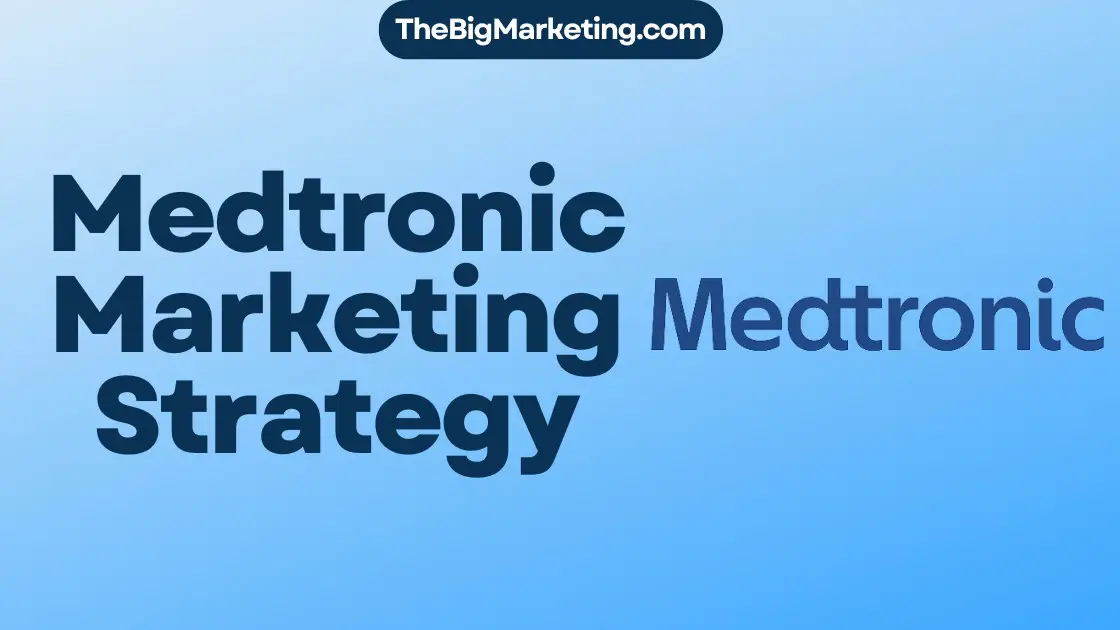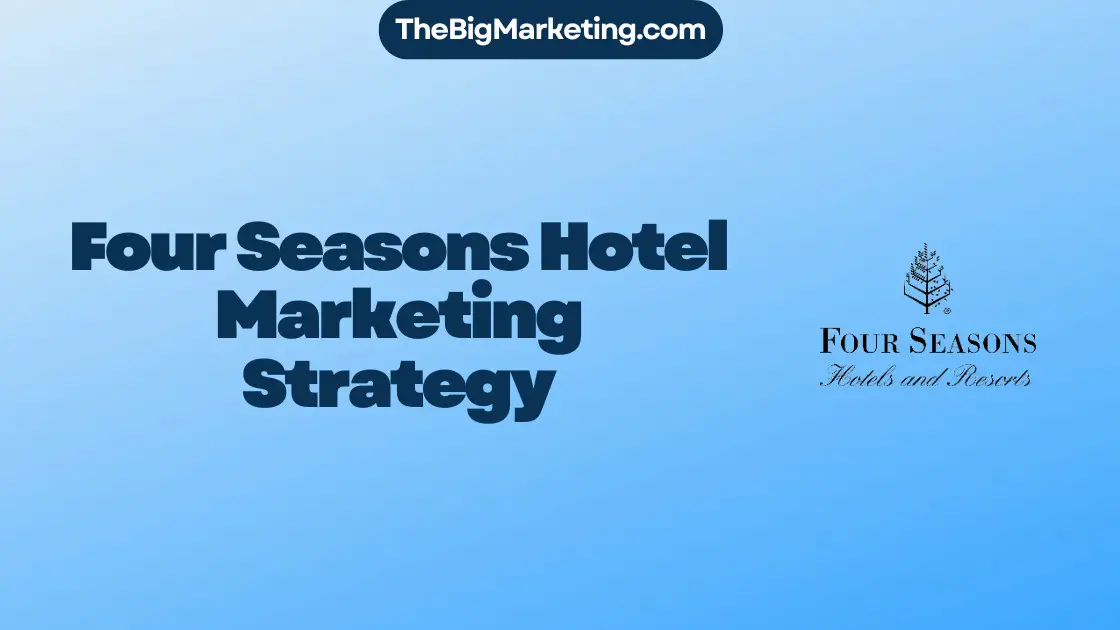Beacon marketing is revolutionizing the way businesses connect with their customers. By harnessing the power of beacon technology, businesses can engage with consumers in a highly targeted and personalized manner. Whether you’re a retailer, a marketer, or a business owner, understanding beacon marketing and its capabilities is crucial in today’s competitive landscape.
So, what exactly is beacon marketing? At its core, beacon technology is a wireless communication technology that utilizes small transmitters called beacons. These beacons emit signals to nearby smart devices, such as smartphones, creating a location-based marketing experience.
With proximity marketing as its foundation, beacon technology enables businesses to reach customers at the right place and time. By leveraging the power of beacons, businesses can deliver relevant and timely messages, offers, and information directly to consumers’ smartphones, enhancing their overall experience.
Beacon marketing has gained significant traction, especially in the retail industry. Its ability to enhance in-store customer experiences, drive foot traffic, and collect valuable customer data has made it a game-changer for retailers worldwide.
In this comprehensive guide, we will delve into the world of beacon marketing, exploring its benefits, strategies, and real-world examples. We will also discuss how beacon marketing works, its timeline of evolution, and its future possibilities. Whether you are a business looking to elevate your marketing efforts or simply curious about this innovative technology, this guide will provide you with all the information you need.
Key Takeaways:
- Beacon marketing utilizes beacon technology to create a location-based marketing experience.
- It allows businesses to deliver targeted messages, offers, and information directly to consumers’ smartphones.
- Beacon marketing benefits include improved offline attribution, enhanced customer engagement, and advanced data gathering.
- Beacon marketing strategies include personalized offers, social media integration, and omnichannel experiences.
- The future of beacon marketing holds promising prospects with IoT and AI integration.
How Do Beacons Work?
Beacons utilize the power of beacon technology, which operates through low-energy Bluetooth technology. These small wireless devices broadcast a unique identifier that can be detected by smart devices, such as smartphones and tablets, in their vicinity. When a smart device detects the beacon’s signal, it recognizes the important location marked by the beacon.
The identifier transmitted by the beacon serves as a key that unlocks various functionalities based on the beacon’s programming. This unlocks the potential for a wide range of applications, from providing users with targeted information to facilitating seamless interactions with their environment.
So, what exactly is inside a beacon? A beacon consists of three main components: a central processing unit (CPU), a radio, and batteries. The CPU handles the device’s programming and data processing tasks, while the radio transmits the beacon’s unique identifier via Bluetooth signals.
As for the power source, beacons typically operate using batteries that are designed to be long-lasting. This ensures continuous operation and allows the beacon to perform its intended functions without interruption.
By leveraging Bluetooth technology and a unique identifier, beacons enable businesses and individuals to enhance their interactions with smart devices and create more personalized experiences.
| Component | Description |
|---|---|
| Central Processing Unit (CPU) | The CPU is the brain of the beacon, responsible for handling programming and data processing tasks. |
| Radio | The radio component enables the beacon to transmit its unique identifier via Bluetooth signals. |
| Batteries | Batteries power the beacon, ensuring continuous operation and functionality. |
Beacon Technology: A Timeline
Beacon technology has come a long way since its inception, revolutionizing the way businesses engage with customers. Let’s take a journey through the timeline of beacon technology, from its introduction to the present day.
The Birth of iBeacon (2013)
In 2013, Apple unveiled iBeacon, a groundbreaking technology that utilizes Bluetooth Low Energy (BLE) to transmit signals to nearby smart devices. This marked the beginning of a new era in location-based marketing and proximity engagement.
Widespread Adoption
Following the introduction of iBeacon, businesses across various industries recognized the immense potential of beacon technology. Major retailers and venues started deploying beacons to enhance customer experiences and deliver targeted content.
| Year | Milestone |
|---|---|
| 2013 | Apple unveils iBeacon |
| 2014 | Installation of beacons in Apple stores |
| 2015 | Top US retailers conduct beacon tests |
| 2016 | Introduction of Google’s Eddystone platform |
| Present | Continued evolution and application of beacon technology |
Apple Stores Lead the Way
In 2014, Apple implemented beacons in their retail stores, providing personalized notifications and product information to enhance the in-store experience. This move showcased the power of beacon technology in a retail environment.
Testing and Validation
During 2015, major US retailers, including Macy’s and Target, conducted extensive tests using beacons. The results demonstrated the effectiveness of beacon technology in increasing customer engagement and driving sales.
Google’s Entry: Eddystone
In 2016, Google introduced its own beacon platform called Eddystone, providing an open-source alternative to iBeacon. This expanded the reach and adoption of beacon technology, offering more flexibility and options for businesses.
Beacon technology continues to evolve, enabling innovative solutions and finding new applications in various sectors. The future holds exciting possibilities as beacon technology integrates with other emerging technologies, creating a seamless and connected customer experience.
What Are the Benefits of Beacon Technology?
Beacon technology offers several key benefits for businesses, helping them enhance their marketing strategies and improve customer engagement. Let’s explore some of the major advantages of beacon technology:
1. Improved Offline Attribution
By connecting beacon signals to Google Ads, businesses can track in-store visits and attribute them to specific marketing campaigns. This improved offline attribution allows businesses to measure the effectiveness of their offline advertising efforts and make data-driven decisions.
2. Out-of-Store Marketing
Beacons enable businesses to engage customers even when they are outside their physical stores. By delivering targeted messages and offers to customers in the vicinity, businesses can drive foot traffic and increase sales. This out-of-store marketing approach allows for hyper-localized marketing campaigns.
3. Advanced Data Gathering
Beacon technology provides advanced data gathering capabilities, allowing businesses to collect valuable insights into customer behavior. By tracking customer interactions with beacons, businesses can gain a deeper understanding of customer preferences, shopping patterns, and dwell times. This data can be used to optimize marketing strategies and improve personalized customer experiences.
4. Google My Business Listing Improvement
Integrating beacons with Google My Business listings can greatly enhance the visibility and engagement of businesses. When customers are in close proximity to a beacon-enabled business, they can receive relevant information and offers directly on their smartphones. This integration creates a seamless experience between the online and offline presence of a business, ensuring maximum exposure and customer engagement.
| Benefits of Beacon Technology | Description |
|---|---|
| Improved Offline Attribution | Connects signals to Google Ads for tracking in-store visits |
| Out-of-Store Marketing | Delivers targeted messages and offers to customers in the vicinity |
| Advanced Data Gathering | Provides insights into customer behavior and preferences |
| Google My Business Listing Improvement | Enhances visibility and engagement through integration |
Beacon Marketing Examples and Strategies
Beacon marketing offers a wide range of possibilities for businesses to engage with their customers in innovative ways. By leveraging beacon technology, retailers can implement various strategies to attract and retain customers while providing personalized experiences. Let’s explore some beacon marketing examples and strategies:
Navigational Assistance
A common use of beacons in retail is to provide navigational assistance to customers. By installing beacons throughout a store, retailers can help customers easily locate specific products or departments. This improves the overall shopping experience and reduces customer frustration.
Deals and Promotions
Beacons enable retailers to deliver targeted deals and promotions to customers based on their location within a store. For example, a customer browsing the shoe section can receive a notification about a limited-time discount on footwear. This personalized approach increases the likelihood of impulse purchases and boosts sales.
Social Media Engagement
Beacons can also be used to encourage social media engagement. For instance, retailers can offer incentives, such as exclusive discounts or rewards, to customers who check-in or share their in-store experiences on social media platforms. This not only increases brand visibility but also generates user-generated content, fostering customer advocacy and loyalty.
Expanded Inventory Suggestions
By integrating beacons with inventory management systems, retailers can provide customers with real-time information on product availability and suggest related items. This personalized approach enhances the customer’s shopping experience and increases the likelihood of cross-selling and upselling.
When implementing beacon marketing strategies, it is crucial for retailers to focus on providing value to their customers. Personalized recommendations, targeted offers, and interactive experiences are key elements of successful beacon marketing campaigns.
Beacon Marketing Examples and Strategies
| Strategy | Description | Benefits |
|---|---|---|
| Navigational Assistance | Help customers find products or departments within a store. | Improved customer experience, reduced frustration. |
| Deals and Promotions | Deliver targeted discounts and offers based on customer location. | Increase impulse purchases, boost sales. |
| Social Media Engagement | Encourage customers to interact and share their in-store experiences on social media. | Enhanced brand visibility, customer advocacy. |
| Expanded Inventory Suggestions | Provide real-time inventory information and suggest related items. | Improved customer experience, cross-selling opportunities. |
How Does Beacon Marketing Work in Retail?
Beacon marketing in retail harnesses the power of beacons to provide personalized experiences and tailored offers to customers based on their location within a store. By utilizing these small wireless transmitters, businesses can enhance in-store customer experiences, improve navigation, offer real-time inventory information, and seamlessly integrate with online shopping platforms.
Enhancing In-Store Customer Experiences
Beacon technology revolutionizes in-store customer experiences by offering navigation assistance. As customers move within a store, beacons can send signals to their smart devices, guiding them to specific products or areas of interest. This feature enables a smoother shopping journey, reducing frustration and improving overall customer satisfaction.
Real-Time Inventory Information
One of the key benefits of beacon marketing in retail is the ability to provide real-time inventory information to customers. Beacons can interact with inventory management systems to ensure customers have access to up-to-date information about product availability, pricing, and promotions. This transparency empowers customers to make informed purchase decisions, leading to higher satisfaction and increased sales.
Omnichannel Marketing Integration
Effective beacon marketing in retail incorporates omnichannel marketing strategies, ensuring a seamless shopping experience for customers across different channels. By integrating online and offline touchpoints, businesses can create a cohesive marketing ecosystem that optimizes customer engagement. For example, beacons can be used to trigger personalized offers or recommendations based on customers’ online browsing history, further enhancing their in-store experience.
| Benefits of Beacon Marketing in Retail | Impact on Customer Experience |
|---|---|
| Enhanced navigation assistance | Effortless store exploration and product discovery |
| Real-time inventory information | Increased transparency and informed purchase decisions |
| Omnichannel marketing integration | Seamless and personalized shopping experiences |
Implementing beacon marketing in retail requires strategic beacon placement, proper integration with digital signage systems, and compelling content creation. By leveraging the power of beacons, retailers can create unparalleled customer experiences, foster brand loyalty, and drive revenue growth.
Privacy and Consent in Beacon Marketing
Privacy and consent are key considerations in beacon marketing. Users should have the ability to provide their consent before receiving any marketing messages through beacon technology. It is important that businesses inform users about how their data will be collected, stored, and used, ensuring transparency in the process.
Respecting user consent helps build trust, which is crucial in maintaining a positive customer relationship. By clearly communicating the purpose of collecting user data and allowing users to make informed decisions, businesses can establish a foundation of trust and respect for their customers’ privacy.
Additionally, providing opt-out options is essential to ensure user control over their privacy. Users should have the choice to disable receiving marketing messages through beacon technology if they no longer wish to participate. This empowers users and reinforces their privacy rights.
To strengthen user trust and comply with data protection regulations, businesses should implement robust security measures to safeguard user data. This includes encryption and secure storage practices to protect user information.
By prioritizing privacy and consent, businesses can create a positive user experience and foster trust with their customers. It is important for businesses to recognize the value of user consent, ensuring that privacy and data protection are at the forefront of their beacon marketing strategies.
Key Considerations for Privacy and Consent in Beacon Marketing:
- Inform users about data collection and usage
- Provide clear and transparent communication
- Offer opt-out options for user control
- Implement robust security measures for data protection
Data Protection Regulations in Select Countries
| Country | Data Protection Regulation |
|---|---|
| United States | California Consumer Privacy Act (CCPA) |
| European Union | General Data Protection Regulation (GDPR) |
| Canada | Personal Information Protection and Electronic Documents Act (PIPEDA) |
Beacons and the Internet of Things (IoT)
Beacons have the incredible potential to integrate with the Internet of Things (IoT), creating a truly connected ecosystem. By leveraging this integration, beacons can communicate with other IoT devices, such as smart home devices, to provide personalized recommendations and enable automation.
Imagine walking into your smart home after a tiring day at work, and the lights automatically adjust to your preferred settings, thanks to the connection between your beacon-equipped smartphone and the IoT. This seamless integration enhances convenience and creates a more comfortable living environment.
Furthermore, the integration of beacons with artificial intelligence (AI) technologies opens up new possibilities for intelligent and automated marketing solutions. By combining the power of AI with beacon data, businesses can gain deeper insights into customer behavior and preferences, enabling them to deliver highly targeted and personalized marketing experiences.
Artificial Intelligence Integration
Artificial intelligence integration with beacons allows for the development of robust marketing strategies that go beyond simple proximity-based notifications. By analyzing the data collected by beacons, AI systems can generate intelligent recommendations for products or services based on customer preferences, purchase history, and even real-time contextual data.
For example, a customer browsing the hardware section in a home improvement store might receive a personalized notification on their smartphone recommending a specific tool, based on their past purchases and current location. This level of personalization creates a more tailored shopping experience, increasing customer satisfaction and overall engagement.
Connected Ecosystem
The integration of beacons into the IoT creates a connected ecosystem where devices interact seamlessly, streamlining daily activities and workflows. This connected ecosystem enables businesses to leverage multiple touchpoints and channels to engage with customers, ultimately enhancing their overall experience.
Through this connected ecosystem, beacons can communicate with various IoT devices, such as wearables and smart appliances, allowing businesses to expand their marketing reach and deliver relevant messages at the right time. For example, a beacon-enabled refrigerator can detect when a customer is low on perishable items and automatically send a notification with personalized offers and suggestions for replenishment.
Comparison of Beacon Integration with IoT and AI
| Integration | Benefits |
|---|---|
| Beacons and IoT |
|
| Beacons and AI |
|
As the Internet of Things (IoT) continues to evolve and artificial intelligence (AI) technologies advance, the integration of beacons with these innovative concepts will unlock even more opportunities for businesses. By harnessing the power of beacons within a connected ecosystem, businesses can create exceptional customer experiences, improve marketing effectiveness, and drive sustainable growth.
Beacon Advertising Opportunities
Beacon technology opens up a world of advertising opportunities, allowing businesses to connect with consumers in innovative ways. By integrating with IoT devices and AI technologies, beacons create a seamless and connected marketing ecosystem.
Integration with IoT
Beacons can take advantage of the Internet of Things (IoT) by communicating with other smart devices. This integration unlocks endless possibilities for targeted advertising and personalized experiences. For example, beacons can sync with smart home devices and recommend products based on user preferences, creating a more relevant and engaging advertising experience.
Integration with AI
Artificial Intelligence (AI) can enhance beacon advertising by analyzing consumer data and delivering intelligent insights. By leveraging AI algorithms, businesses can automate their marketing strategies and provide hyper-personalized advertisements in real-time. AI-powered beacons can learn from user behavior, preferences, and demographics to optimize ad targeting and improve campaign performance.
Photovoltaic Beacons for Sustainability
Incorporating photovoltaic technology into beacons offers an eco-friendly solution. Photovoltaic beacons can harness artificial light to generate electricity, reducing reliance on batteries and making the devices more sustainable and cost-effective. This not only benefits the environment but also ensures uninterrupted beacon functionality, providing a reliable advertising channel.
Unlocking New Advertising Horizons
With beacon advertising, businesses can reach customers in real-time, precisely targeting them based on their location and preferences. By utilizing the integration with IoT and AI, marketers can create personalized and contextually relevant ads, increasing customer engagement and driving conversions. The opportunities presented by beacon technology in advertising are limitless, enabling businesses to connect with consumers in unique and impactful ways.
| Advantages of Beacon Advertising | Integration with IoT | Integration with AI | Photovoltaic Technology |
|---|---|---|---|
| Targeted and personalized advertising | Enables communication with other smart devices | Leverages AI algorithms for intelligent insights | Sustainable and cost-effective solution |
| Real-time engagement with customers | Captures valuable data for better audience targeting | Automates marketing strategies | Reduces reliance on batteries |
| Innovative and interactive advertising experiences | Enhances the effectiveness of advertising campaigns | Improves ad targeting based on user behavior | Ensures uninterrupted beacon functionality |
Enhancing Customer Engagement with Beacon Marketing
Beacon marketing offers businesses an opportunity to enhance customer engagement by incorporating various strategies. By leveraging gamification techniques, such as mobile games and contests, businesses can incentivize customer interaction and create an enjoyable experience.
Integration with social media platforms plays a vital role in amplifying customer engagement. By allowing customers to seamlessly share their experiences and generate user-generated content, businesses can capitalize on the power of social media to extend their reach and attract new customers.
Moreover, providing omnichannel experiences is crucial in fostering customer engagement. Seamlessly integrating online and in-store experiences enables businesses to create a unified brand experience, ensuring customers can seamlessly transition between channels without any disruptions.
Examples of Gamification in Beacon Marketing:
- Mobile games with rewards and discounts for completing specific tasks or challenges.
- Contests and competitions that encourage customer participation and engagement.
- Virtual scavenger hunts to drive customer footfall and exploration within a physical space.
Benefits of Integration with Social Media:
- Increased brand visibility through user-generated content and shares across social platforms.
- Enhanced customer loyalty and brand advocacy as customers actively engage and promote the business.
- Real-time feedback and insights from social media interactions, helping businesses refine their marketing strategies.
Creating Omnichannel Experiences:
Businesses can implement the following strategies to provide seamless omnichannel experiences:
- Consistent branding across all channels to maintain a cohesive customer experience.
- Integration of online and in-store inventory to allow customers to easily switch between online browsing and in-store purchasing.
- Personalized recommendations and customized offers that are consistent across all touchpoints.
By enhancing customer engagement through gamification, social media integration, and omnichannel experiences, businesses can build stronger relationships with their customers, drive repeat visits, and boost sales.
Implementing Beacon Marketing Campaigns
Implementing beacon marketing campaigns requires strategic planning and execution to maximize their effectiveness. Key aspects of implementation include beacon placement, integration with digital signage systems, content creation, and thorough testing and optimization.
Strategic Beacon Placement
Proper beacon placement is crucial for effective beacon marketing campaigns. Strategic placement ensures that beacons are positioned in high-traffic areas where they can reach a maximum number of potential customers. Placing beacons near entrance points, key product displays, or checkout counters can help capture customers’ attention and prompt engagement.
Integration with Digital Signage Systems
Integrating beacons with digital signage systems enhances the impact of beacon marketing campaigns. This integration allows for the delivery of personalized messages and actions triggered by proximity to the beacon. For example, when a customer approaches a digital signage display, the beacon can trigger relevant content or offers to be displayed on the screen, creating a more tailored and immersive experience.
Content Creation
Creating compelling and relevant content is essential for capturing the attention and interest of customers. Beacon marketing campaigns should focus on delivering valuable information, promotions, or incentives that resonate with the target audience. High-quality visuals, clear calls-to-action, and personalized messaging are key ingredients for engaging customers and driving desired actions.
Testing and Optimization
Testing and optimization play a crucial role in ensuring the success of beacon marketing campaigns. It’s important to test beacon functionality, such as signal range and accuracy, to ensure reliable performance. Additionally, monitoring and analyzing campaign data help identify areas for optimization and improvement. By analyzing customer engagement data, businesses can refine their content, targeting, and overall strategy to maximize campaign effectiveness.
Implementing beacon marketing campaigns involves thoughtful planning, integration, and optimization to achieve desired results. By strategically placing beacons, integrating them with digital signage systems, creating compelling content, and continuously testing and optimizing campaigns, businesses can unlock the full potential of beacon marketing and drive meaningful customer engagement.
| Key Steps for Implementing Beacon Marketing Campaigns |
|---|
| 1. Plan strategic beacon placement in high-traffic areas. |
| 2. Integrate beacons with digital signage systems for personalized messaging and actions. |
| 3. Create compelling and relevant content to engage customers. |
| 4. Test beacon functionality and optimize campaign performance. |
Conclusion
In conclusion, beacon marketing offers businesses a wide range of benefits. By leveraging beacon technology, businesses can improve offline attribution, providing valuable insights into the effectiveness of their marketing campaigns. The ability to deliver personalized customer experiences, based on location and preferences, enhances engagement and drives customer loyalty. Additionally, beacon technology enables businesses to gather advanced data, helping them optimize their marketing strategies and make data-driven decisions.
The future of beacon marketing looks promising, with continued growth and advancements in IoT and AI integration. As more devices become connected, the possibilities for beacon marketing expand, allowing businesses to create a seamless and personalized omnichannel experience for their customers. With the integration of AI, beacon marketing can further enhance automation and deliver intelligent marketing solutions.
In summary, beacon marketing empowers businesses to elevate their marketing strategies and deliver unique experiences to their customers. The benefits of beacon marketing, including improved offline attribution, personalized experiences, and enhanced data gathering capabilities, make it a valuable tool for businesses of all sizes. As the technology continues to evolve, the future of beacon marketing holds limitless potential for innovation and growth in the marketing landscape.





